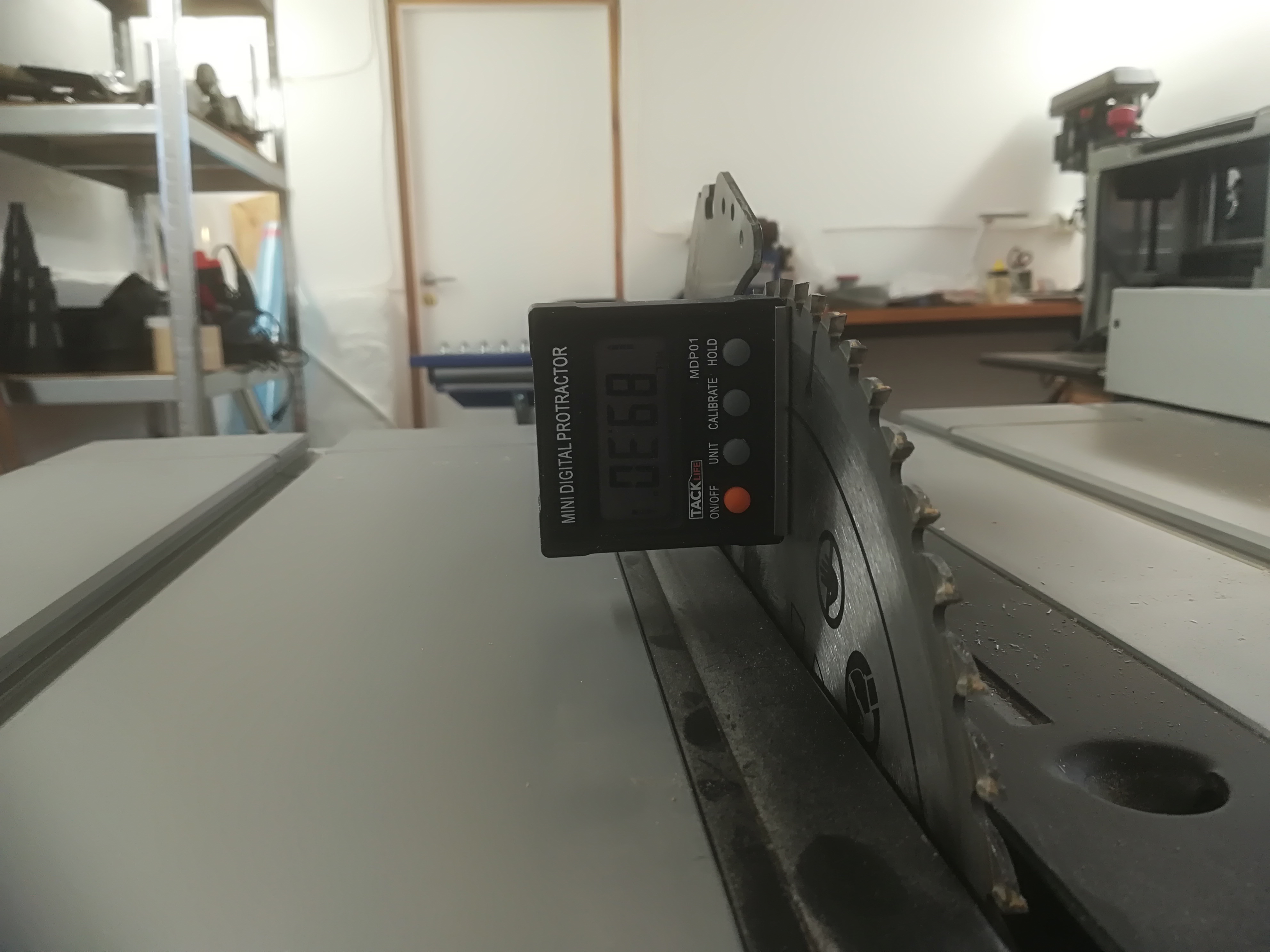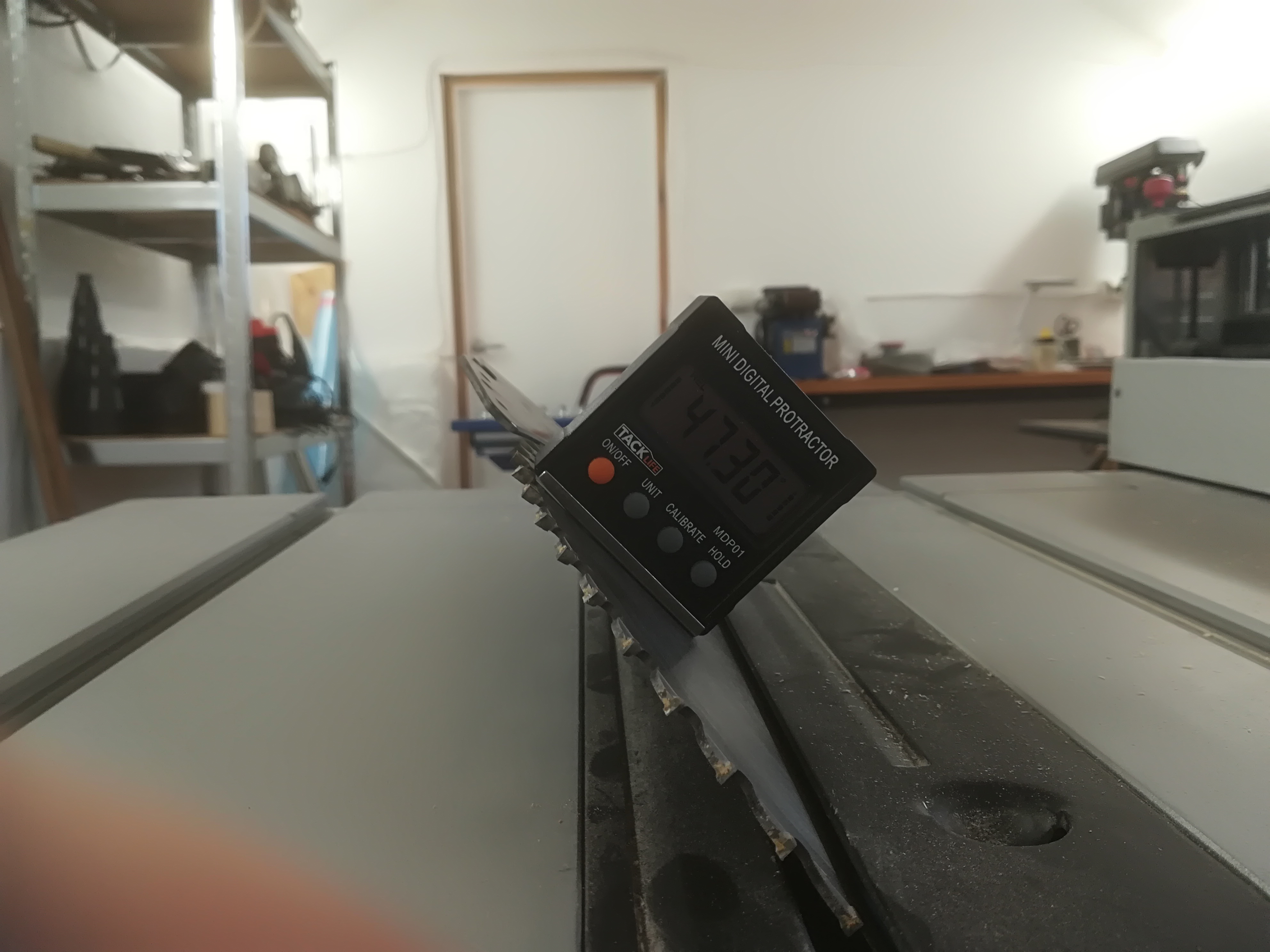Woodworkers regularly need to confirm that their saw blades are set to the correct angle when making a cut. Most cuts are square, with the blade perpendicular to the base the workpiece sits on. Almost any try-square can be used to test the blade position, and either confirm or deny that the blade is square. The disadvantage of this method, is that one never really knows how much deviance is encountered when the blade isn’t square.
When cutting a bevel, most woodworkers just rely on the scale on the saw. If they suspect that something is wrong, they can make measurement with tape measures, and calculate the angle encountered. This, of course, takes time. Which means that it is not done very often, if ever.
There is another approach, that is equally fast to using a square with perpendicular saw cuts, and orders of magnitude faster with bevel cuts. The device is a mini digital protractor that can be used to determine blade cutting angles with stationary electric rip-cut saws, cross-cut saws, and many other tools including band saws and plunge saws (aka track saws).
I am now the owner of one of these devices, a Tacklife MDP01 mini digital protractor (MDP), thanks to the kindness of my daughter, Shelagh. This week I have tested it out on a Scheppach HS 105 rip-cut saw.
To begin, I placed the MDP on the saw table. It was at this very point that I learned that the table was made of a non-magnetic substance, undoubtedly aluminum. I then pressed the ON/OFF button, waited a few seconds and noted the value shown on the display. It showed 0.30° which seemed an acceptable figure. I then pressed the CALIBRATE button, and the MDP changed to 0.10°. I tried several times, and finally it returned a value of 0.00°, as shown below.

The MDP was then placed on the saw blade, as shown in the photograph below. It showed 89.3°. This is 0.7 degrees off the expected value of 90°, and more than the 0.5° deviation that is generally tolerated. It means that I will have to spend some time finding out what I can do about this, and then doing it or, learning to live with imperfection.
If the HOLD button is pressed, the value on the display will be maintained even if the unit is removed from the blade and put on the table.


I cranked the blade to maximum bevel, which should have been 45°. There are many situations where wood has to be cut at this angle. Unfortunately, this saw would not allow the blade to move that far. The MDP showed 47.3° which is over 2° off. This means that I will have to find a solution to this challenge in the coming days and weeks.
Even though I was disappointed with the measurement, I was not disappointed with the speed at which this angle was calculated. It was available in a matter of seconds.
The UNIT button allows people to shift between degrees and angle percentages. Since I will be working exclusively in degrees, this button will only be used if it somehow gets onto the wrong form of measurement.
The device comes in an attractive, but plain, cardboard box, just slightly larger than the device itself. It also comes with an instruction booklet that measures 50 mm x 50 mm. Instructions are provided in English, German, French, Spanish, Italian and, presumably, Chinese. The text size is at the limit of what older people can read, and I was very happy that my workshop contains a lamp with built-in magnifying glass.
An aside: It is important to read specifications. I had always assumed that the table with the Scheppach HS105 was some type of steel. Perhaps it was just wishful thinking, because I had considered buying a magnetic feather board that could sit on the table and ensure that workpieces are tightly held against the fence while being cut. I have just saved someone the expense of importing one of these devices. Instead, I will be making my own feather board out of wood, on the band saw.
An acknowledgement: I would like to thank Shelagh McLellan for providing this Tacklife MDP01 Mini Digital Protractor.
This weblog post was updated 2021/12/21. to eliminate Needs from the title. This post formed part of a Needs, Seeds and Weeds website that belonged to my daughter, Shelagh. In addition, other things are also out of date, or my opinions have changed. Apart from the title, updating the text to a block format and other minor formatting changes, the text above this paragraph remains as it was before. Any significant content changes are found below this paragraph.

